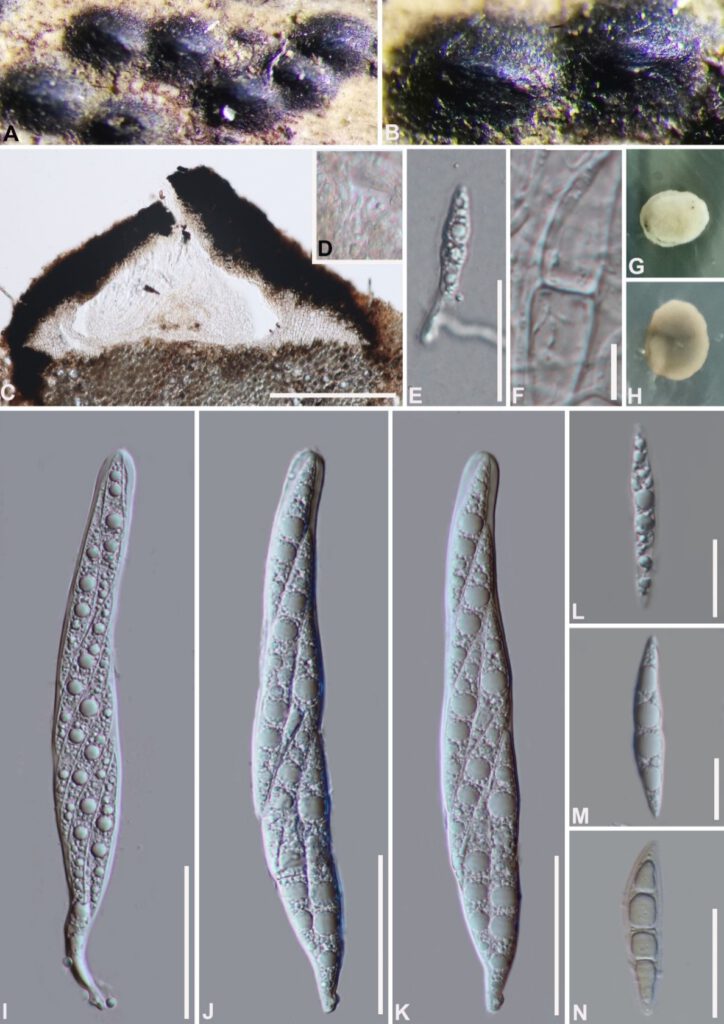Fissuroma bambucicola
MycoBank number: MB; Index Fungorum number: IF; Facesoffungi number: FoF 10587;
Material examined: CHINA, on dead bamboo culms, 1 May 2019, Yao Feng (GZAAS 21−0185, holotype).
Description: Saprobic on the dead stem of bamboo, forming a layer of black particles visible to the naked eye on the host surface. Sexual morph: Ascomata 282–344 μm high, 568–607 μm wide (x̅ = 304 × 587 μm, n = 10), erumpent to superficial, solitary to gregarious, black, hemispherical, base flattened, with a slit on its surface, slit-like ostioles with periphyses, unilocular. Peridium is uneven thickness, thin at the base and thicker on both sides towards the tip, consisting of several layers of dark brown to black pseudoparenchyma. Pseudoparaphyses hyaline, trabeculate, anastomosing, embedded in a gelatinous matrix. Asci 170–202 × 21–27 μm (x̅ = 189 × 24 μm, n = 20), 8-spored, bitunicate, fissitunicate, cylindric-clavate or obclavate, wide in the middle, tapering to the edges, apically obtusely rounded with a small ocular chamber, base with a short pedicel. Ascospores 50–64 × 8–11 μm (x̅ = 57 × 10 μm, n = 30), overlapping 1–2 seriate, fusiform, hyaline, smooth-walled, tapering to pointed apices, 1-septate (rarely 3-septate), slightly constricted at the septum, guttulate, surrounded by a thin mucilaginous sheath. Asexual morph: Undetermined.

Figure Fissuroma bambucicola (GZAAS 21–0185, holotype) (A, B) Appearance of ascomata on host. (C) Vertical section of ascomata. (D) Periphyses. (E) Germinating ascospore. (F) Pseudoparaphyses. (G, H) Culture. (I−K) Asci. (L−N) Ascospores. Scale bars: C = 200 μm. E = 30 μm. F = 10 μm. I−K = 50 μm. L−N = 20 μm.
